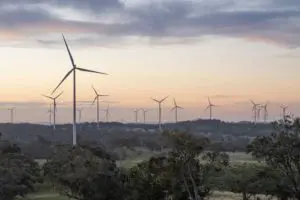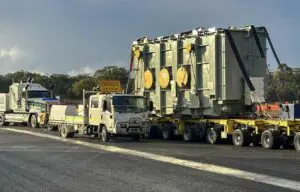The New South Wales Labor government has commissioned an inquiry into the feasibility of undergrounding the hundreds of kilometres of new transmission infrastructure the state needs to replace its retiring fleet of coal power generators with new large-scale solar and wind.
NSW energy minister Penny Sharpe says the Minns government is aware of the concerns of regional communities over the visual and environmental impact of major builds like HumeLink, which proposes to install another 360km of huge transmission towers and overhead cables.
To this end she has requested the Legislative Council’s Standing Committee on State Development inquire into and report on the cost and logistics of burying new transmission lines underground, instead.
“This inquiry is an opportunity for everyone to have their say and to understand the issues that need to be weighed up when delivering this infrastructure,” the minister said on Tuesday.
Sharpe says the committee will weigh the costs and benefits of undergrounding against any impacts on the timeframes of delivery and on the environment.
The findings of the report, which will also consider existing examples of undergrounding in Australia and overseas, are expected to be reported by the end of August.
Digging out of trouble
In New South Wales, alone, more than 2,500km of new transmission lines are needed to accommodate new renewable energy generators and interconnection between regions, renewable energy zones and states.
This will be a costly exercise, with transmission company Transgrid looking at a bill north of $10 billion for its planned projects, including the 1,600km Southern Superhighway made up EnergyConnect, HumeLink and VNI West.
Alongside cost, the biggest hurdle standing in the way of getting these critical projects up and running is social licence, as governments and network companies try to sell regional communities on hosting huge towers and high voltage lines in their “back yards” – and in some cases through national parks.
Putting the lines underground gets around this key community sticking point. It also cuts some costs by removing the huge steel towers from the equation. But there are downsides, too.
A high price to pay
In a 2021 report commissioned by network company Transgrid, researchers found that the cost of undergrounding the 360km Humelink project would be three times higher than for above ground transmission lines and blow out the project’s timeline by two-three years.
The report put the cost of undergrounding HumeLink at an estimated $11.5 billion (for HVDC lines), compared to the project’s above-ground cost of $3.3 billion, and its development period at seven years, compared to four to five years for the overhead option.
As detailed here, the increased costs were put down to a range of factors, most notably the need to dig the massive trenches. Other cost drivers included labour, materials, plant and equipment, engineering and project management costs.
Or money well spent?
Interestingly, however, community groups interpreted the conclusion from that report as a win for undergrounding, in that it debunked claims it can be as much as 10 times more expensive than overhead lines, making the extra cost a much more reasonable trade-off for social licence.
Arguments over logistics and timing, however, might be more difficult to overcome, particularly as NSW races against the clock to replace outgoing coal power generation.
“The Minns Labor government is committed to delivering the renewable energy transition that New South Wales deserves, in a way which is cost effective and environmentally responsible,” Sharpe says.










